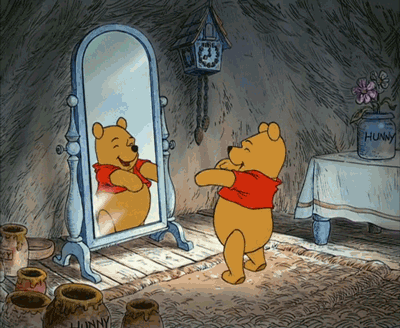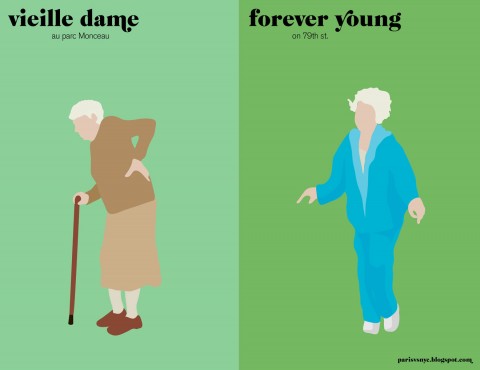- The Danger of Measuring Emotions
An easy way to identify a future dilemma is to spot two polar, but entirely sensible, reactions to an emerging practice or technology. Which is just what I happened to find when reading through a couple recent articles on new efforts to measure emotions–which, depending on your perspective, will either open up huge opportunities to improve the lives of autistic children, or usher in a massive invasion of personal privacy. Or both.
Let’s start with the less controversial application. As Technology Review reports, a Massachusetts-based startup company called Affectiva has developed a wearable bracelet that can measure “stress and excitement by measuring slight electrical changes in the skin.” In effect, the wearable bracelet can provide continuous, real-time monitoring for changes in emotional states–and offer a tool to help caregivers of autistic children, who frequently struggle to express emotions.
It works like this:
When a person–autistic or not–experiences stress or enters a “flight or fight” mode, moisture collects under the skin (often leading to sweating) as a sympathetic nervous system response….
“When you see this flight-or-fight response, it doesn’t tell you it’s definitely stress, it just tells you something has changed,” says [MIT’s Rosalind] Picard. “Are they excited, hurting, are they stressed by a sound or person in the room? It doesn’t perfectly correspond to stress as it can also go up with anticipation and excitement, but when you see it change, you know something’s going on and you can look for the cause.” She adds that having clues to a person’s stress levels, which might not otherwise be detectable, could give caregivers and researchers more insight–and possibly a way to anticipate–the harmful behaviors of autism, such as head banging. Caregivers can try to identify and block sources of stress and learn what activities restore calm.
With an example like a child banging his head against the wall due to unexpressed emotion, it’s easy to see how caregivers could benefit from a tool like that helps them anticipate emotional distress.
Of course, it’s also to see how just about anyone could benefit from having a better understanding of the emotions of others. I’d love to know, for example, which parts of my research presentations trigger strong biochemical reactions.
And, it turns out, I’m not the only one who would like to have the ability to measure other people’s emotions–and that’s beginning to cause some backlash. As Fast Company reports, the U.K.-based security firm Aralia Systems is developing a security camera that can detect emotional responses–even in the darkness of a movie theater.
The intention is to produce rich data that can measure the details of an individual’s face. Aralia will leverage 3-D face recognition technology that the university is already developing. When you sit in the audience of a theater with their system, you’ll be illuminated with an infra-red beam, and three or more cameras will continually monitor the crowd to create stereoscopic images–just like the 3-D digital cameras that are now launching on the consumer markets.
The system should be able to detect a great deal. It will know the direction your face is pointing in, your expression, whether you’re shocked by something, whether you’re sitting in a family group or on your own, at what point you get bored, and so on. This is invaluable data for marketers, who can gauge how well their ad messages are getting across. Potentially, they could change the ad’s placement in the reel between showings to see if they get a better reaction.
Computer World, in an article titled “Anti-Pirating tool will harvest and market your emotions,” reacted by describing the system as “a massive invasion of privacy.” Which, despite the alarmist language, sounds fairly reasonable. I don’t know many people who want their emotions to be continuously and surreptitiously monitored by random businesses.
And that brings me back to the core dilemma here. In the coming decade, data about our individual bodies–including our subjective states–has enormous potential to improve our lives. We will rely on innovations, like the two I’ve mentioned here, to help us measure those subjective states. And at times, we may benefit, enormously so, from having the ability to share these shifts in emotional states with others.
But our moment-to-moment emotions are incredibly personal. Many of us go to great lengths to keep hidden and have absolutely no interest in having others track, measure and mine those emotions without asking.
Reblogs for 20101103
Party Team Extreme
This post isn’t for the faint of heart–or liver.

I’ve been kicking this idea around for a while to make a list of the biggest/best/awesomest parties and festivals from all around the world, and systematically attending them. You’ll find the current list at the bottom of this post, and I encourage you to suggest others!
So what about the PARTY TEAM? Well, if you’re the jet-setting, adventure-seeking, pretty-bitchin-awesome type of person, I invite you to come along for this rad journey. You don’t have to come for all of the events, but I’d love to assemble a crew who can descend on any festival whether it’s Mardi Gras, Carnival, or La Tomatina and GO HARD. Like I said before: DO YOU HAVE WHAT IT TAKES?
If you’re reading this, you just might…
If you want to learn more, the list of events is below. I’m arranging them in a rough order of how I’m thinking of attending them, starting with US/Canada events and moving farther abroad. Anything past the first two or three is not in any sort of order other than how soon I found them. Continue reading “Party Team Extreme”
Reblogs for 20101030
- Paris versus New York
Paris versus New York is a friendly visual match between those two cities, as seen by a Parisian-based-and-lover on New York : details, cliches and contradictions. Absolutely fantastic.
(thank you Jolayne)
Reblogs for 20101030
Reblogs for 20101022
- thedailywhat:
Unusual Jewelry of the Day: “’Til Death Do Us…

Unusual Jewelry of the Day: “’Til Death Do Us Part” engagement ring knuckle duster by Kate Bauman.
4” x 3”. Sterling silver, cubic zirconia. 2006.
[buzzfeed.]
- Photo

Reblogs for 20101018
Reblogs for 20101005
Reblogs for 20101004
- Photo

- Photo

- Collective intelligence in small teams
A new study co-authored by MIT researchers documents the existence of collective intelligence among groups of people who cooperate well, showing that such intelligence extends beyond the cognitive abilities of the groups’ individual members, and that the tendency to cooperate effectively is linked to the number of women in a group.
Many social scientists have long contended that the ability of individuals to fare well on diverse cognitive tasks demonstrates the existence of a measurable level of intelligence in each person. In a study published Thursday, Sept. 30, in the advance online issue of the journal Science, the researchers applied a similar principle to small teams of people. They discovered that groups featuring the right kind of internal dynamics perform well on a wide range of assignments, a finding with potential applications for businesses and other organizations.
“We did not know if groups would show a general cognitive ability across tasks,” said Thomas W. Malone, the Patrick J. McGovern Professor of Management at the MIT Sloan School of Management, one of the authors of the paper. “But we found that there is a general effectiveness, a group collective intelligence, which predicts a group’s performance in a lot of situations.”
That effectiveness, the researchers believe, stems from how well the group works together. Groups whose members had higher levels of “social sensitivity” — the willingness of the group to let all its members take turns and apply their skills to a given challenge — were more collectively intelligent. “Social sensitivity has to do with how well group members perceive each other’s emotions,” said Malone. “In groups where one person dominated, the group was less intelligent than in groups where the conversational turns were more evenly distributed.” Teams containing more women demonstrated greater social sensitivity and in turn collective intelligence, compared to teams containing fewer women.
When ‘groupthink’ is good
To arrive at their conclusions, the researchers conducted two studies in which 699 people were placed in groups of two to five and worked on tasks that ranged from visual puzzles to negotiations, brainstorming, games and complex rule-based design assignments. The researchers concluded that a group’s collective intelligence accounted for about 30 to 40 percent of the variation in performance.
Moreover, the researchers found that the performances of groups were not primarily due to the individual abilities of the group members. To determine this, many of the participants also performed similar tasks individually. The average and maximum intelligence of individuals did not significantly predict the performance of their groups.
The paper’s lead author was Anita Woolley, an assistant professor at Carnegie Mellon University’s Tepper School of Business. The other researchers in the study were Christopher Chabris, an assistant professor of psychology at Union College in New York; Malone; Alexander Pentland, the Toshiba Professor of Media Arts & Science at the MIT Media Lab; and Nada Hashmi, a doctoral candidate at MIT Sloan. The study received funding from the National Science Foundation, the Army Research Office and Cisco Systems.
To record the interactions of people, the researchers equipped study participants with wearable electronic badges — designed by Pentland’s Media Lab group — that provided a complete record of a group’s conversational patterns and revealed a group’s propensity to take turns. “When you do that, it’s possible to get patterns you’ve never seen before,” said Pentland.
Only when analyzing the data did the co-authors suspect that the number of women in a group had significant predictive power. “We didn’t design this study to focus on the gender effect,” Malone said. “That was a surprise to us.” One implication is that the level of collective intelligence should keep rising along with the proportion of women in a group. To be sure, as Malone said, that gender effect is a generalization. “Of course some males have more social skill or social sensitivity than females,” Malone acknowledged. “What our results indicate is that people with social skills are good for a group — whether they are male or female.”
Malone said he believes the study applies to many kinds of organizations. “Imagine if you could give a one-hour test to a top management team that would allow you to predict how flexibly that group of people would respond to a wide range of problems that might arise,” he said. “That would be a pretty interesting application. We also think it’s possible to improve the intelligence of a group, by either changing the members of a group, or teaching them better ways of interacting.”
How universal is it?
Colleagues in the field found the results intriguing. Jeremy Gray, an associate professor of psychology at Yale University, said the study “was very well done,” adding that “the key point is great, that features of the group can be more important than features of the individuals that make up the group, for determining outcomes.”
However, Gray, responding to questions by e-mail, noted that the study raises additional questions for further investigation. Beyond the relatively routine tasks used in the study, he wrote, “high-stakes or high-risk situations would also be very important to understand. There is no guarantee that the same pattern of results would hold, for example, for a jury deliberating a death-penalty case, a corporate board facing a hostile-takeover bid, criminal gangs battling a rival gang, and so on. We just don’t know yet.” Moreover, he added, “clarifying the conditions under which the proportion of women makes a difference would be interesting.”
Malone said the co-authors “definitely intend to continue research on this topic,” including studies on the ways groups interact online, and are “considering further studies on the gender question.” He added that “collective stupidity,” the failure of a group to perform to the abilities of its members, exists along with collective intelligence. “Part of the research agenda for this field is to understand better the conditions that lead to one rather than the other,” Malone explained. “Many factors can affect a group’s intelligence, including the social sensitivity, norms, and motivations of group members, as well as the composition of the group.” For now, Malone said his group has identified a general principle indicating how the whole really can be greater than the sum of the parts.
“Having a bunch of smart people in a group doesn’t necessarily make the group smart,” concluded Malone.
















